Heritage Places and Memories
All heritage sites have the potential to be sites of memory to a greater or lesser extent. In some heritage sites, memories transmitted in intangible forms bear more significant value than physical evidence of the sites. The dynamic and plural nature of the world’s cultural and natural heritage in diverse societies has not been sufficiently considered in the discourse of the 1972 World Heritage Convention.
Because different the values and meanings of heritage sites can be developed by different groups, a collective memory of heritage places is not always homogeneous. Instead, heritage places are composed of diverse, plural and sometimes dissonant memories and associations. Similar values and significances in different sites highlight common human achievements to become an opportunity for further cooperation, while diverse interpretations or memories of heritage sites can, when approached intentionally or accompanied by complementary public programming, present opportunities to bridge divides and deepen social cohesion.
How can the World Heritage Convention approach the representation of these sites of memory? How do the other international conventions or programs address this issue and what are the practical ways do ensure their conservation?
The objective of the initiative is to foster the implementation of the Convention through a more inclusive approach towards interpretation and conservation of heritage places. While some prominent values have been identified through the nomination process, others might have been omitted or ignored, mainly those voiced by local communities within and/around the places.
The organizers of this theme are keen to engage in dialogue with various voices from different regions and diverse groups. In addition to the series of academic webinars, campaigns and on-site activities, in particular with the participation of youth, will be organized in the month of September 2021.
Associated Themes:
Places of memory presenting common intangible values, as a symbol of universality of human experience through time and space
Changing meanings of place in relation to heritage values and identities through place-making and memory-making, and through changing historical interpretation.
Presentation and interpretation on the common memories in heritage-making of different site.
Presentation of divergent or contested memories in heritage sites as a path to enhanced social cohesion and new understandings of the past.
Integrating indigenous and local community voices and values into site management and conservation, ensuring the inclusion of a multiplicity of perspectives and a variety of entry points to facilitate broad engagement.
Modernising processes have little time or respect for indigenous knowledge practices or ‘ways of knowing’. This is the case even though indigenous practices have enabled people to cope with issues such as healthy eating, illness challenges, as well as extreme weather events, for many years. Such practices offer decision making options, relating to village-based risk avoidance, that enable more sustainable living. This is particularly apt when considering that humanity requires more sustainable development trajectories that embrace complexity, while, at the same time, moving away from top-down technocratic approaches to a more participatory governance, research and political agendas. This, in short, is all about ‘just transitions’ as we seek to move towards sustainable living without compromising people. Within this milieu, scientific knowledge is still limited in securing a deeper understanding on how such change can be achieved. This begs the question that if modern science should embrace indigenous knowledge as a legitimate form of knowledge generation, could it bring about a deeper understanding of sustainable practices and a move towards participatory governance, research and political mechanisms?
Hand-washing and health – An Example from Africa
To put this question into context, elderly Nguni people, for example, describe how, in the past, when a stranger arrived at a village, a complex hand-washing ritual was followed before greetings were exchanged. Such a ritual has relevance to the current COVID-19 crisis where the spread of a virus can be inhibited by careful hand-washing. Interestingly, the tradition held that it was unwise to dry ones hands on fabric after washing. This is because the fabric could further harbour germs. Hands were simply allowed to drip-dry which meant that any germs would simply pass into the soil where natural microbial processes would neutralise any possible pathogens.
Unfortunately, indigenous knowledge practices and indeed natural and cultural heritage have at times been denigrated. In response to this the Southern African Journal of Environmental Education produced a dedicated edition, Volume 35, on this topic (Pesanayi et al., 2019). Pesanayi et al. (2019) describe how education in colonial southern Africa has dominated and marginalised indigenous heritage, cultures and practices. This occurs through assumptions of western modernisation, and, by default, modern scientific practices.
Milpa/forest garden cycle – An Example from Belize
Milpa/forest garden cycle has been a characteristic practice of cultivating the land by the Maya people of Central America for thousands of years. This technique involved clearing the jungle with controlled fires to create cultivable land. The ashy and fertile soil is then ready to plant maize, beans, squash, from a basketful of 100 other polyculture crops. After a few years of use, these areas strategically regenerated, creating forest gardens maintained to grow perennial plants and trees to supply all the needs of everyday life. Ironically, the modern perception of this method – shifting slash-and-burn agriculture – does not recognize the cycle and the importance of the annual and perennial components. The push to transition to industrial monoculture agriculture exhausts lands and has grown to cause serious environmental issues. Changing trends in land use and land cover threaten upland and wetland forest ecosystems.
When forests are cleared permanently and the land is used with petrochemical inputs to stave off exhaustion, noticeable changes in the weather patterns occur. The rejection of traditional agricultural methods leads to a depauperate agricultural and biological landscape.
MODERATOR: Jim Taylor - Former President, The Environmental Education Association of Southern Africa (EEASA).
PANEL COMMENTORS
Ella Erzsébet Békési, Director, Cultural Heritage & Tourism Professional of the Heritage Education Network Belize (HENB).
Dawson Munjeri, Professor, Culture and Heritage Studies at the University of Great Zimbabwe.
PROGRAM & SPEAKERS
1. Lessons of the Past: Nature and Maya traditions at Pachamama - Belize
by Rob O’Donoghue - Professor Emeritus at the Environmental Learning Research Centre (ELRC), Rhodes University
The presentation will explore indigenous knowledge practices as a foundation for emancipatory learning transactions at the margins of colonial modernity. Examples of heritage practices are contemplated as transformative learning actions from below, together, emergent through the re-discovery and recovery of indigenous knowledge practices for learning-led innovation towards more sustainable lifestyles and livelihoods, Indigenous agro-ecological and socio-economic practices in southern Africa have enabled people to historically cope with and adapt to issues such as healthy eating and other livelihood practices despite a colonial history of exclusion and a continuing socio-cultural and economic marginalisation in modern settings. An adaptive resilience is evident amongst many indigenous peoples who have been culturally and socio-economically consigned to the margins in the modern nation states in southern Africa and elsewhere.
Within this abjection, many subjugated communities, have commonly been confronted with education as a modernising development process. Here modern education is designed to empower participants so that they can extract themselves from what are commonly seen as historically embedded conditions of underdevelopment confronted by many intractable challenges to future sustainability. Another reading of these sociocultural conditions is that colonial modernity has produced complex conditions of risk to future sustainability and that indigenous peoples have an intergenerational cultural capital for learning-led innovation in relation to many sustainability concerns, for example:
Handwashing in the face of cholera and COVID-19 (Gaze izandla) – SDG
Composting organic waste for carbon sequestration (Izala & ukuthatha ihlathi lomthi.)
Leaf harvesting of green vegetables for nutritional health (imifino & umfuno)
Home fermented milk and grains for dietary health (Amasi & maRewu)
Clarifying spring water to collect sweet water (uthuthu & Amanzi mNandi)
A culturally situated and emancipatory learning approach to future sustainability contemplates ESD as an action learning arena for regenerative just transitioning struggle in these challenging times of a COVID-19 pandemic and climate change that are currently playing out on a global scale.
This perspective has emerged within a participatory turn in education that has been slow to emerge as open, co-engaged learning actions that is no longer constrained by a dialectical epistemic gulf between Indigenous and Western. What has charaterised many current approaches to ESD is a retention of an ‘outside mediating hand of modernity’ that has always known best for The Other as ‘target group’ for an educational intervention. A parallel ‘knowledge practices’ oeuvre of critical realism has resolved much of the latent ambiguity here to enable a re-visioning of education (ESD) as a realist dialectic of co-engaged learning for emancipatory transitioning.
Education re-framed as co-engaged innovative work around indigenous knowledge practices as learning from below, together, is explored to clarify education as realist epistemic processes of dialectical emancipation. ESD is thus being explored as emergent and learner-led around indigenous knowledge practices in relation to healthy lifestyle and sustainable livelihood practices through a Hand-Print CARE approach to learning actions from below, together.
The above examples illustrate that a cultural historical approach embedded in a critical realist episteme can, for example, enables us to re-imagine ESD as co-engaged dialectical learning at the intersection of indigenous knowledge practices and the disciplinary sciences in school settings of ESD. Illustrative examples of indigenous knowledge practices in southern African eco-cultural settings are used to explore how education can be reframed as emancipatory epistemic processes that are staged and engaged by participants within the sustainability challenges that they face and around those that we all share in this modern era of transformative learning towards a just recovery from the current pandemic.
2. Lessons of the Past: Nature and Maya traditions at Pachamama - Belize
by Felicita Cantun - president of Kanan Miatsil, Guardians of Culture Association
3. The Living Museum of El Pilar: Archaeology Under the Canopy
by Anabel Ford - Maya archaeologist
and Cynthia Ellis Topsey - community advocate promoting sustainable development
4. My life depends on chocolate and chocolate depends on mother earth and mother earth depends on love
by Julio Saqui - Indigenous Mopan Maya, Owner of Che’il Mayan Chocolate of Maya Center Village, Belize
My name is Julio Saqui, an Indigenous Mopan Maya, Owner of Che’il Mayan Chocolate of Maya Center Village, Belize. I grew up with Dad, a farmer and one of the crops he plants that excites me, is cacao fruits. He uses it for his Rituals, ceremonies and drinks as well. I told him I want to make it into edible chocolate bars, which he gets to taste, before he passes away. Today, I find peace and wellness in chocolate, as I continue the art of chocolate making into Dark & Milk chocolate bars and other Che’il chocolate products.
5. Livelihood Enhancements in the Maya Golden Landscape
by Marvin Vasquez - Operation Director at Ya’axché
The “Outstanding Universal Value” of a World cultural or natural site and the UNESCO quest for common human values and rights should be better connected to present ideas and current concerns, with particular attention to people. The significance of a heritage site is enriched by the diverse memories of the site’s associated communities.
Although a majority of WH sites highlight common achievements, some raise issues of multiple or divergent interpretations. These issues should be openly addressed. This can be at the national level and involve consideration of cultural minorities and/or Indigenous communities associated with the site. But, when it is at the international level, as in the World Heritage Convention, these issues are particularly critical and require tactful treatment.
This Associate Theme will examine ways of peacefully consider such sensitive problems, bridge divides and deepen social cohesion. It will examine how to prevent conflicting presentations of interpretations of a site’s history, not only by acknowledging that multiple memories are associated with the site but also by articulating a methodology for involving diverse stakeholders in the nomination process, the monitoring of sites and capacity building. It will explore how digital technologies make it possible for civil society, the stakeholders associated with the site and Academia can feed pluralistic interpretations, beyond the national presentation by States Parties.
The organizers are keen to engage in dialogue with a variety of stakeholders from different regions, with a focus on good practice in how to prevent or reconcile dissonant memories at both World Heritage sites and at those that are not. Different interpretations could also be presented, on the Site or on websites, allowing the visitor to have a personal opinion. The outcomes of this dialogue will inform the interpretation and presentation as an important dimension of the management of cultural or natural heritage sites.
SESSION ORGANISERS
Jean-Louis Luxen, Member of the Board of Trustees, International Coalition of Sites of Conscience.
Haeree Shim, Programme Chief, Preparatory office for International Centre for the Interpretation and Presentation of World Heritage Sites under the auspices of UNESCO(WHIPIC).
Soobeen Cho, Project Consultant, Preparatory office for International Centre for the Interpretation and Presentation of World Heritage Sites under the auspices of UNESCO(WHIPIC).
SPEAKERS
Ali Moussa Iye - founder and director of AFROSPECTIVES
Neil Silberman - managing partner of Coherit Associates, an international heritage consultancy
XXX
INNOVATIVE MODELS FOR INCLUSIVE INTERPRETATION OF CULTURAL HERITAGE SITES
This webinar will look at best practice in the interpretation of heritage sites with a focus on multiple narratives and dissonant history. Over the last 30 years, the importance of acknowledging that heritage sites have multiple meanings and often dissonant and conflicting histories has become a critical issue in the cultural heritage sector. At the same time, interpretation plans are increasingly focusing on the role of memory and the contribution of communities associated with heritage sites.
This webinar draws on significant work on Sites of Memory and Sites of Conscience that has taken place over the last 20 years, not only for World Heritage sites but also for heritage in general. The International Coalition of Sites of Conscience works with heritage sites and museums in over 65 countries to harness public memory to foster new understandings of the past, build social cohesion and promote cultures of human rights. Its programs support the development of inclusive, community-centered interpretation, prioritizing multiple perspectives and traditionally marginalized voices as a catalyst for bridging difference and enhancing local engagement in the preservation and maintenance of heritage sites. Sites of Memory have also been a focus for UNESCO, with a report on interpretation of Sites of Memory delivered to UNESCO in 2019.
Questions the webinar will ask include:
What ‘history’ is being presented at this site? Who controls interpretation?
Whose narratives and perspectives are included? Whose have been excluded? Why?
What is the role of the expert in interpretation? What is the role of the community?
How is evidence used in interpretation? What is the role of archival evidence as a complement to oral history, memory and community stories?
How can we promote intergenerational dialogue?
How can we support communities to explore and share a site’s divisive and/or multiple histories?
What does effective inclusive, community-centered interpretation look like in practice?
What does it look like on site?
SESSION ORGANISERS:
Elizabeth Silkes - Executive Director The International Coalition of Sites of Conscience.
Sue Hodges - Managing Director, Sue Hodges Productions (SHP) and the ICOMOS International Scientific Committee on the Interpretation and Presentation of Cultural Heritage Sites (ICIP).
MODERATOR: Jihon Kim - Senior Programme Specialist, Korean National Commission for UNESCO.
WELCOMING REMAKRS: Prof. Jaeheon Choi - Professor and a Chair of World Heritage program at Konkuk University, Seoul. ICOMOS World Heritage Panel member and the former Secretary General of ICOMOS Korea.
PROGRAM & SPEAKERS
Krista McCracken - Interim Director, Shingwauk Residential Schools Centre, Canada
Christelle Dethy - Responsable pédagogique et projets, Le Bois du Cazier, Belgium.
Callie Hawkins - Interim Director, President Lincoln’s Cottage, US.
Julio Solórzano Foppa - Director, Memorial para la Concordia, Guatemala.
Professor Paul Ashton - Parramatta Female Factory Institutions Precinct, Australia.
Bonney Djuric - Chair of the Executive Board, Parramatta Female Factory Institutions Precinct, Australia.
Jacqueline Wilson - Board Member, Parramatta Female Factory Institutions Precinct, Australia.
Heritage is a complex term that embraces a huge range of tangible and intangible values including its meanings that gives its unique character and sense of place. The values that people assign to places are not static; they change gradually over time following socio-economic changes or rapidly because of conflict, war, or natural disasters. The process of assessing the values follows an international system as well as local. However, changing meanings has an impact on the integrity, authenticity, and management of heritage. The plurality of place meaning requires employing various methods and tools for mapping and interpreting these meanings, such as community consultation, stakeholders’ workshops, digital tools, the internet, crowd sourcing, social media…. etc.
The present associate theme on ‘changing meaning’ will explore various methods that are used to assess and map out the meaning and/or sense of heritage places and their changes. It will explore how digital technologies make it possible to map out heritage meanings for civil society (including youth), the various local and international stakeholders alongside the national presentation by States Parties. Through a webinar, we will also explore how new meanings and associated values can be incorporated into the recognized Outstanding Universal Value of existing World Heritage properties.
EXPECTED OUTCOME
The organizers are keen to invite various examples from different regions, with a focus on good practice in how to map and assess the meaning of heritage place beyond the official designation, and engage in dialogue with a variety of stakeholders from different regions. The outcomes of this dialogue will be a set of recommendation that will inform an inclusive place-making process as well as the decision-making in heritage management. It will also hopefully influence the World Heritage Committee and its advisory bodies to adopt more flexible approaches to the redefinition of the Outstanding Universal Value of existing World Heritage properties.
SESSION ORGANISERS
Christopher Young - Heritage Consultant and former Head of International Advice at English Heritage.
Hiba Alkhalaf - Postdoctoral Research Associate, The Department of Classics at King’s College London.
PROGRAM & SPEAKERS
1. Aleppo Reconstruction - Syria
by Dr. Ali Esmil - CEO of Aga Khan Cultural Services in Syria.
Aleppo has witnessed a large scale of destruction during the conflict, particularly during (201-2016). Since then, the rehabilitation and rebuilding in Aleppo has started focusing mainly on market places (Souq). They are funded and implemented by the Aga Khan Development Network, and the project of Souk al-Saqatiya” has won the Grand Award for the category of Heritage Sites and Buildings of ICCROM-ATHAR. The project succeeded in rehabilitating a popular marketplace by drawing upon a high-quality sustainable restoration work within the Reconstruction Project, while training the local cadres and contractors.
2. The rehabilitation of Beit Yakan - Cairo
by El-Habashi
Beit Yakan is a privately renovated 17th century house located in Darb el Labbana in Historic Cairo in Egypt. It is now the headquarters of its renovator’s Professional Practice (Turath Conservation Group) and NGO (Center for Revitalization of the City). It organizes events and workshops for the community which focus on heritage and art/culture. This project Cairo has won various awards and recognitions for its success into brining heritage, development, community & Sustainability.
3. Mapping collective memory of Banja Luka – Bosnia and Herzegovina
by Dr Jelena Stankovic
How does a place know itself? One of the ways a place knows itself is how it is represented on maps where we can see its cartographic history & identity. People draw maps in order to understand the city in which they live and record the collective memory preventing the city from being forgotten. This has caused the need for drawing new collective memory maps.
The memory maps of Banja Luka are based on the collective memory recorded in archive materials. There were difficulties in drawing them as they required the integration of texts, photographs and maps that had to be collected and brought together into one place. Each document about Banja Luka differs in detail, especially because of changing building and street names, so compiling these sources that complement each other was how these maps were drawn. This could be applied to any city in the world, especially to ever changing and culture vibrant regions such as the Balkans.
4. Traditional architecture development: Ishikura architectural system in Takachiho. Miyazaki – Japan
by William Roger Acosta Villanueva, Keio University, Graduate School of Media & Governance | Hiroto Kobayashi & Shigeru Ban laboratory.
The town of Takachiho in Miyazaki, Japan there is known as the place where the gods and Japanese mythology born. This place is also known for its beautiful and productive landscapes in which the agriculture is one of the main sources of their economy. Traditionally they are practicing farming for many years and improving their traditional techniques as well as their methods for conservation and storing of food. The construction system was used to protect food and other important belongings from exterior conditions and were part of the traditional house in this area in the south. In the last 40 years, technology arrived to these rural places, so locals started to use modern ways to keep food into safe spaces. After that, these vernacular and beautiful constructive systems were abandoned and currently are used as general deposits in really poor conditions.
5. Sensing Place: using digital platforms to engage communities with their heritage - East London and the Caribbean
by Prof. Niall Finneran & Dr Christina Welsh - University of Winchester, Department of Archaeology, Anthropology and Geography.
6. The Ginna Kanda Programme, Identity and intervention in African’s cultural landscape in Dogon’s country – Mali
by Miquel Vidal Pla - Universidad Politécnica de Cataluña, Escuela Técnica Superior de Arquitectura, ETSAB, Av. Diagonal, 649 Barcelona, España
The Dogon Country in the Bandiagara Fault in Mali is partially recognized as a World Heritage Site by UNESCO. It is a fragile cultural landscape based on mud architecture, mostly attached to the vertical section of the fault. The abandonment of houses and barns leads to their destruction. The identity and the intangibles of the Dogon Country are the only ones of which there exists, although questioned, documentation written. The situation is extremely serious as tourism, a relative source of income and international connection have disappeared due to the social instability of the place and the armed conflicts.
In the framework of the “Our World Heritage” initiative, our approach covers one of the 12 themes of the initiative: “Heritage Places and Memory”. We are pleased to invite all YOUTH around the world to share different ideas on the transmission of heritage memory.
Young people who submitted a short film on their own memories of the World Heritage Sites will join the roundtable, and special mentoring from the international heritage expert will be another valuable opportunity for the youth. This event welcomes participation of ALL DIFFERENT GENERATIONS.
MODERATOR: Jihon Kim, Senior Programme Specialist, Korean National Commission for UNESCO.
SPECIAL MENTOR
Christina Cameron, Professor, the University of Montreal (Canada) from 2005 to 2019, chairing the World Heritage Committee in 1990 and 2008.
PROGRAM & SPEAKERS
The winners of the Youth Video Contest will share memories in Heritage Sites and the significance of the heritage in the video clips.
Voice from Gochang Getbol
H5 Team: Jung Yoon Choi, Seung Min Lee, Jung Eun Lee, Sun Mi Shin, Sung Ho Jang - Graduate Students in World Heritage Studies at Konkuk University, Korea.
Memories of the Future – Leonardo Gélio
Tre+Co: Melanie Martins Barroso, Pedro Vitor Costa Ribeiro, Victória Michelini Junqueira - Architects and Urban Planners, the Faculty of Architecture and Urbanism of the Federal University of Rio de Janeiro, Brazil.
Tarkarli
Adesh Arun Takale - Founder of Space Media, India.
Kullu
HBTACH Team: Yash Gupta - Conservation Architect for Himalayan brother Trust for Arts and Cultural Heritage(HBTACH), India.
Gyeongju Historic Areas
Jin Hyuck Jang - Graduate Student in World Heritage Studies at Konkuk University, Korea.
MODERATOR: Prof. Jaeheon Choi, Professor and a Chair of World Heritage program at Konkuk University, Seoul. ICOMOS World Heritage Panel member and the former Secretary General of ICOMOS Korea.
COORDINATOR: Jihon Kim, Senior Programme Specialist, Korean National Commission for UNESCO.
CONGRATULATORY REMARKS: Michael Turner, Professor and UNESCO Chair holder in Urban Design and Conservation Studies at the Bezalel Academy of Arts and Design, Jerusalem.
PANEL DISCUSSION:
Ahmed Skounti, Professor, The National Institute of Archaeology and Heritage Sciences (INSAP), Rabat, Morocco.
Christopher Young, Heritage Consultant and former Head of International Advice at English Heritage.
Elizabeth Silkes, Executive Director, International Coalition of Sites of Conscience.
Jean-Louis Luxen, Member of the Board of Trustees, International Coalition of Sites of Conscience.
Ella Erzsébet Békési, Director, Cultural Heritage & Tourism Professional of the Heritage Education Network Belize (HENB).
ORGANISATION:
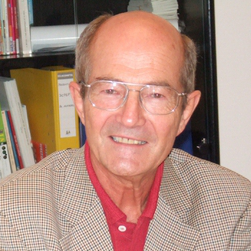
Jean-Louis Luxen
Coordinator
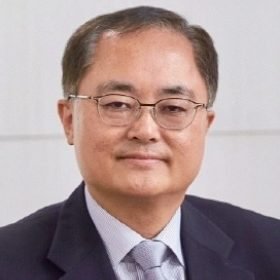
Jaeheon Choi
Co-Convener

Jihon Kim
Co-Convener
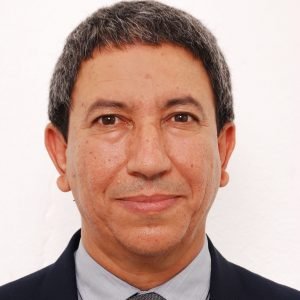
Ahmed Skounti
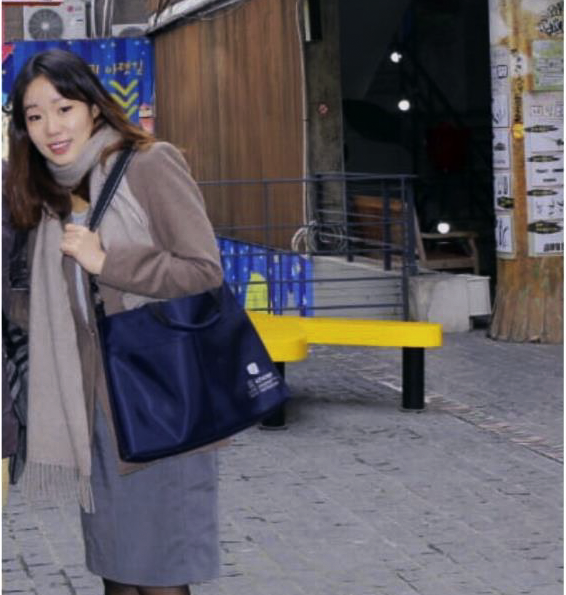
Haeree Shim
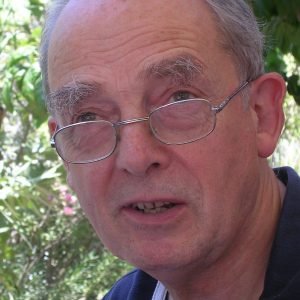
Christopher Young
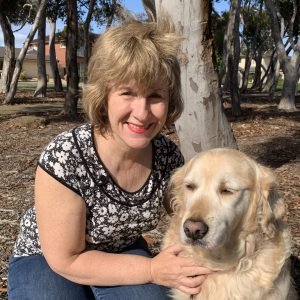
Sue Hodges
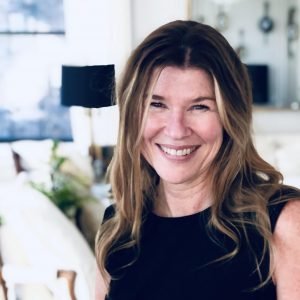
Elizabeth Silkes

Jim Talyor
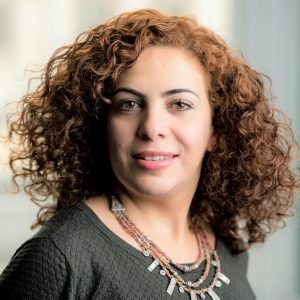
Hiba Alkhalaf
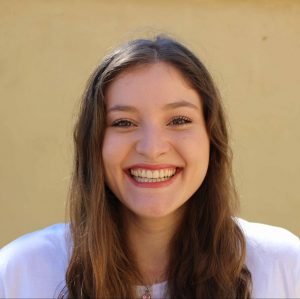
Ella Erzsébet Békési
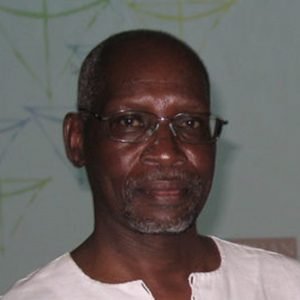
Dawson Munjeri

Loubna Tahiri

Jinhyuck Jang

Hyunjae Kim
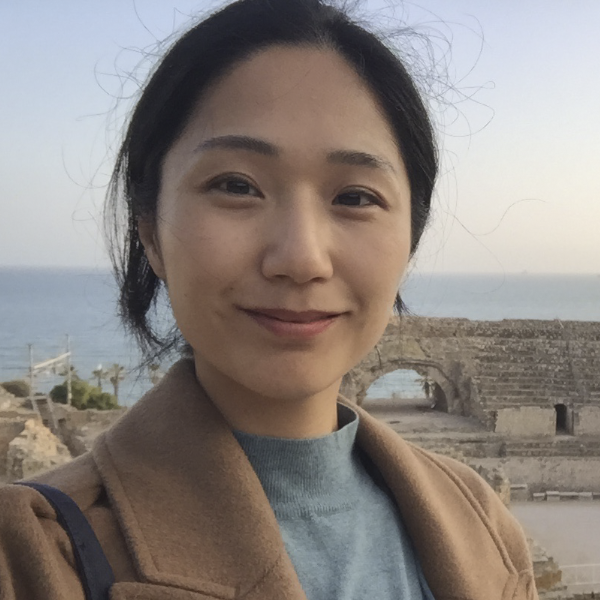
Jungeun Lee
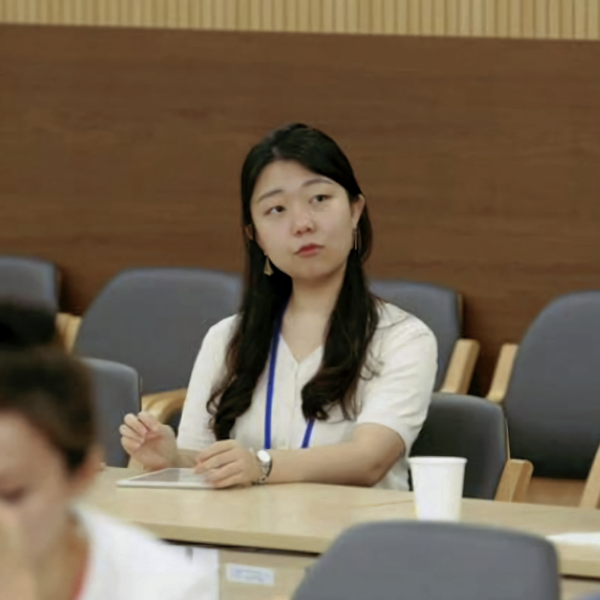
Soobeen Cho







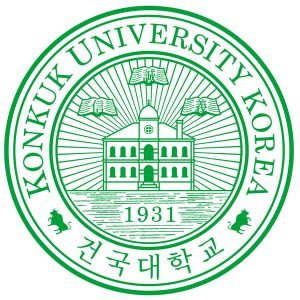

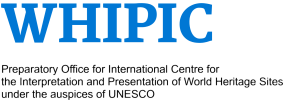

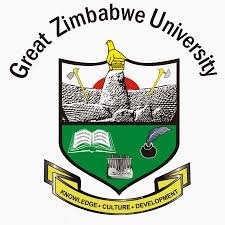
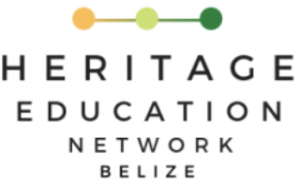
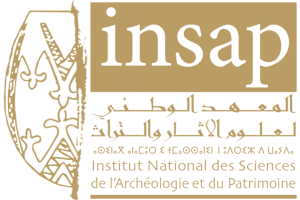
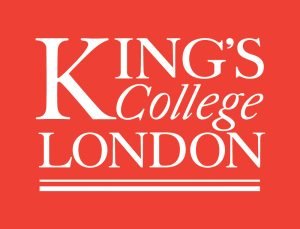
Reports of all events within the thematic month of “Heritage Places and Memory”, including a discussion on more inclusive and diverse approaches - within the implementation of the UNESCO World Heritage Convention.
With the theme of “Heritage Places and Memory”, the organizers have organized a series of academic webinars, campaigns and on-site activities in the month of September 2021. The report of each event will be shared during the closing event. Discussion on the way move forward for more inclusive and diverse approaches in the implementation of the UNESCO World Heritage Convention will be followed.
MODERATOR: Jaeheon Choi - Professor and a Chair of World Heritage program at Konkuk University, Seoul. ICOMOS World Heritage Panel member and the former Secretary General of ICOMOS Korea.
CONGRATULATORY SPEECH: Francesco Bandarin - Member of Advisory Committee of Our World Heritage / Former director of the UNESCO World Heritage Centre (2000-2010) and Assistant director-general of UNESCO for Culture (2010-2018).
CLOSING SPEACH: Jean-Louis Luxen, Member of the Board of Trustees, International Coalition of Sites of Conscience.
REPORT OF THE THEMATIC EVENTS
#1 Heritage Sites – Intangible Values :
Loubna Tahiri - PhD Candidate, National Institute of Archaeology and Heritage Sciences (INSAP), Rabat, Morocco.
#2 Changing meanings of heritage places:
Hiba Alkhalaf - Postdoctoral Research AssociateSue Hodges Productions (SHP), The Department of Classics at King’s College London.
#3 Interpretation and presentation:
Sue Hodges - Managing Director, Sue Hodges Productions (SHP) and the president of the ICOMOS International Scientific Committee on the Interpretation and Presentation of Cultural Heritage Sites (ICIP).
#4 Diverse, plural or dissonant memories:
Haeree Shim - Programme Chief, Preparatory Office for International Centre for the Interpretation and Presentation of World Heritage Sites (WHIPIC).
#5 Indigenous knowledge practices:
Jim Taylor, Former President, The Environmental Education Association of Southern Africa (EEASA).
Youth Roundtable:
Jihon Kim,- Senior Programme Specialist, Korean National Commission for UNESCO.